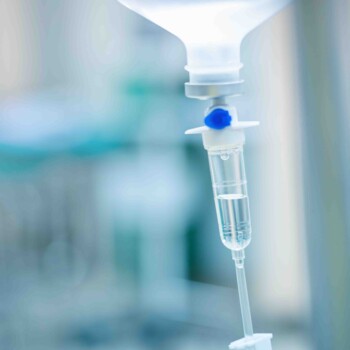Article Summary
Vitamin B-12 supports blood and nerve cell growth, metabolism, and mood regulation. Discover its history, sources, deficiency symptoms, and various treatment options including injections and supplements. Explore how Empower Pharmacy can help address vitamin B-12 deficiency effectively.Vitamin B-12 aides in the growth of healthy blood cells, nerve cells, and bodily proteins; assist with the metabolism of fats and carbohydrates to release energy; help regulate appetite and mood (key factors in overeating); and are a great treatment for people who cannot absorb vitamin B-12. Vitamin B-12 is an essential water-soluble vitamin that is commonly found in a variety of foods such as fish, shellfish, meat, eggs, and dairy products. Important in DNA synthesis, vitamin B-12 is frequently used in combination with other B vitamins in what is known as a vitamin B-complex formulation. Vitamin B-12 is bound to the protein in food, and released by stomach acids during digestion. Once released, B-12 combines with a substance called intrinsic factor (IF) before it is absorbed into the bloodstream.
The human body stores several years’ worth of vitamin B-12 in the liver, so low levels in the body are rare. Decreases in vitamin B-12 levels are more common in the elderly, HIV-infected persons, and vegetarians. Vitamin B-12 deficiency is often defined by low levels of within the body stores of this vitamin, which can result in anemia – a lower-than-normal number of red blood cells wherein some of the symptoms include fever, excessive sweating, and soreness or weakness in the arms and legs. The inability to absorb vitamin B-12 from the intestinal tract can lead to various types of anemia, the most prominent of which is a type of megaloblastic anemia called pernicious anemia. However, this form of anemia is quickly remedied through vitamin B-12 supplementation.
Vitamin B-12 has a fascinating history, which rounds out over a decade of vitamin research as one of the last vitamins to be discovered. An essential daily nutrient, vitamin B-12 is needed to maintain healthy red blood cells, healthy nerve cells, and to make DNA. However, it was discovered as a cure to a condition known as pernicious anemia, which is directly related to a vitamin B-12 deficiency.
Pernicious anemia is a blood disorder in which red blood cells fail to develop normally, resulting in the steady decline of red blood corpuscles that was fatal until the 1920s. The disease was first described completely in 1849 by English physician Thomas Addison (1793-1860), who noted that the typical symptoms included increasing weakness and pallor, accompanied by obesity or weight gain rather than weight loss.[1][2][3]
Numerous scientists played roles in helping to discover and isolate the causes and cure for anemia:[4][5][6]
- Dr. Newcastle was never looking for a vitamin supplement, but rather a simple cure for pernicious anemia. He discovered that administering regurgitated gastric juices to his patients caused disease improvement.
- Dr. George Whipple’s (1878-1976) studies showed that beef liver could improve the formation of red corpuscles in anemic dogs. He bled dogs to induce anemia and then set about to find out which foods would cause the dogs to recover the quickest. He discovered that feeding the dogs raw liver essentially cured anemia. Thus, raw liver, or raw liver juice became the treatment of choice for pernicious anemia. He recommended patients eat at least a 1/2 pound per day.
- George Minot and William Murphy were two researchers who set about to try to isolate the curative property of raw liver. They were successful in showing that the curative property was in the liver tissue. For their respective roles in the discovery of a cure of pernicious anemia Whipple, Minot, and Murphy all won the 1934 Nobel Prize in Medicine.
- Edwin Cohn created a liver extract that was substantially more potent than simply eating raw liver.
- American and British researchers Karl A. Folkers and Alexander R. Todd respectively, simultaneously discovered, isolated, and named cobalamin (vitamin B-12) in 1948.
- Dorothy Crowfoot Hodgkin with more sophisticated technology, using crystallographic data, was able to determine the molecular structure of vitamin B-12. This made it possible in the 1950s to produce large quantities from bacteria cultures leading to the modern form of treatment for the disease. She also won a Nobel Prize for her work.
Vitamin B-12 Deficiency
Pernicious anemia is a decrease in red blood cells that occurs when your intestines cannot properly absorb vitamin B-12, and presents a host of complications and symptoms. However, studies have shown that a deficiency of vitamin B-12 can also lead to abnormal symptoms. These symptoms may include ataxia (shaky movements and unsteady gait), muscle weakness, spasticity (stiff or rigid muscles), incontinence (lack of bladder and/or bowel control), hypotension (low blood pressure), vision problems, dementia, psychoses (abnormal condition of the mind), and mood disturbances. Giving vitamin B-12 by mouth, by injection, or by nasal inhalation is effective for preventing and treating dietary vitamin B-12 deficiency.
There exists a long list of other conditions, disorders, and complications related to vitamin B-12 deficiency, and on which the research remains unclear/inconclusive, but has shown some improvement during vitamin B-12 supplementation including:[7][8][9]
Alzheimer’s disease, Angioplasty (opening narrowed/blocked arteries), Breast cancer, Canker sores, Cardiovascular disease/hyperhomocysteinemia, Cervical cancer, Claudication (leg pain from clogged arteries), Depression, Diabetic neuropathy (nerve damage), Diagnostic procedure, Facial spasm, Fatigue, Fractures (prevention), High cholesterol, Imerslund-Grasbeck disease, Joint pain (elbow), Mental performance, Poisoning (cyanide), Shaky-leg syndrome, Sickle cell disease, Sleep disorders (circadian rhythm)
Vitamin B-12 Sources and Treatments
Vitamin B-12 is necessary to produce an adequate amount of healthy red blood cells in the bone marrow, is available only in animal foods (meat and dairy products) or yeast extracts (such as brewer’s yeast). Vitamin B-12 is a water-soluble vitamin, which means it easily dissolves in water and is paradoxically stored in the liver (making it a good source). It is eliminated from the body through the urine, typically between 24 and 72 hours after consumption, depending on how active a person is and the amount of fluids they take in. Due to the rapid rate with which the body processes Vitamin B-12 frequent supplementation is needed to address deficiencies.
The stomach acids that aid in the natural breakdown of food also breakdown vitamin B-12 pill supplements, the body will only absorb a small amount when ingested orally. In addition, as a person gets older the body’s ability to absorb B-12 through digestion continually decreases. In fact, many adults are completely unable to absorb B-12. Injections provide a direct and concentrated method of supplying the body with the vitamin B-12, and are of particular value to older populations when normal absorption rates decrease, even in the absence of pernicious anemia. The conventional way of fixing a vitamin B-12 deficiency has been through intramuscular injections.[8]
Research findings show ample evidence to reveal that injections of 1 to 2 milligrams per day can quickly correct deficiencies. It is not apparent whether smaller amounts, such as the 25 micrograms or so found in multivitamins, are sufficient to cure deficiencies. Such a claim is substantiated by the fact that although oral supplementation with vitamin B-12 is safe, efficient, and inexpensive most multi-vitamin pills contain 100-200 micrograms of the cyanocobalamin or methylcobalamin forms of B-12. Furthermore, many multivitamins cannot be chewed, which is important for their thorough absorption.
Routine B-12 injections at a dosage of 1 milligram per month also helps to lower homocysteine levels in the blood, thereby reducing the probability of heart diseases and strokes. A vitamin B-12 injection acts as a stimulant for energizing the body, through cobalamin, which transmits its “anti-stress” elements to the human body. For example, the recommended effective cure for chronic fatigue syndrome (CFS) is 6 to 7 milligram dose of vitamin B-12 intramuscular injection per week for 3 weeks.
- System of Medicine (London, 1909), V, 728–757. Clifford Allbutt and Humphrey Davy Rolleston, eds. Pernicious Anemia. French Herbert.
- Annals of Medical History, 7 (1935), 130-132. Addison and His Discovery of Idiopathic Anemia. Long E. R.
- Modern Medical Monographs (New York and London, 1959), p. 63. The Megaloblastic Anemias. Herbert Victor.
- Orv Hetil. 2013 Nov 3;154(44):1754-8. History of the therapy of pernicious anemia. Jeney A.
- N Engl J Med. 2014 Feb 20;370(8):773-6. Vitamin B-12 and pernicious anemia–the dawn of molecular medicine. Bunn HF.
- Ann Nutr Metab. 2012;61(3):239-45. The discovery of vitamin B(12). Scott JM, Molloy AM.
- Turk J Haematol. 2013 Jun;30(2):226. Huge dose vitamin B-12 (vit B-12) treatment for pernicious anemia. Ozsoylu S.
- Pediatr Blood Cancer. 2014 Apr;61(4):753-5. Vitamin B-12 deficiency: The great masquerader. Dobrozsi S, Flood VH, Panepinto J, Scott JP, Brandow A.
- Semergen. 2013 Jul-Aug;39(5):e8-e11. Neurological signs due to isolated vitamin B-12 deficiency. Martinez Estrada KM1, Cadabal Rodriguez T, Miguens Blanco I, García Méndez L.






